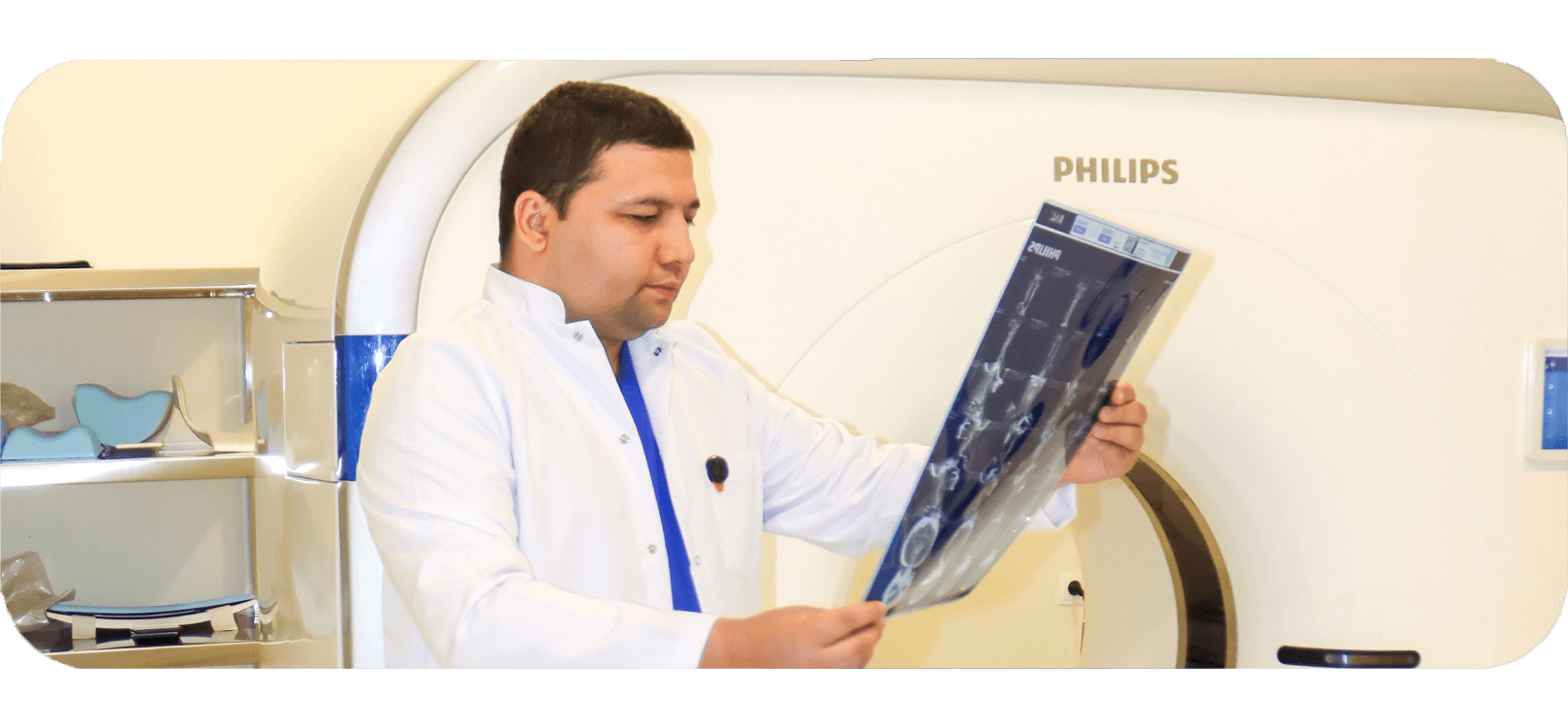Welcome to the Department of Functional Diagnostics at Kimyo University Hospital
At Kimyo University Hospital - we provide state-of-the-art medical services across all fields of medicine, and our Functional Diagnostics Department is no exception. Our department offers a comprehensive range of diagnostic imaging services to visualize internal body structures. This includes imaging of the chest, bones, joints, and soft tissues, enabling the detection and diagnosis of fractures, infections, tumors, and other diseases. At Kimyo University Hospital, we prioritize patient comfort, safety, and confidentiality.
Our diagnostic services include advanced techniques such as CT angiography, which allows for detailed visualization of blood vessels in areas like the thoracic aorta, abdominal aorta, and upper and lower extremities. We also perform three-phase studies of the kidneys and abdominal cavity to provide thorough and precise diagnostic information.
By leveraging cutting-edge technology and a patient-centered approach, we ensure the highest standards of care in medical imaging and diagnostics.

Radiography - is the study of the internal structure of objects that are projected using x-rays onto a special film or paper.
At Kimyo University Hospital, this includes imaging of the chest, bones, joints and soft tissues to detect and diagnose fractures, infections, tumors and other diseases. At Kimyo University Hospital, we prioritize patient comfort, safety and privacy.
Our services:
Chest X-ray
Dental X-rays
Abdominal X-rays
Bone X-rays
Mammography
Spine X-rays
Fluoroscopy
Welcome to Kimyo University Hospital's Department of Ultrasound!
At Kimyo University Hospital, we offer cutting-edge medical services in all spheres of medicine, and our Department of Ultrasound is no exception. Ultrasound, also known as sonography, is a non-invasive imaging technique that uses sound waves to create real-time images of the internal structures of the body. This technology allows us to visualize organs, tissues, and blood vessels, aiding in the diagnosis and monitoring of various medical conditions. At Kimyo University Hospital, we prioritize patient comfort, safety, and confidentiality.

Angiography is a method of X-ray contrast examination of blood vessels, often used to diagnose various diseases. This method allows visualization of vessels in any part of the body, including the head, limbs, and heart. Angiography helps evaluate the presence and location of both normal and accessory arteries; determine the degree of preservation of their lumen, identify narrowings (stenosis) or expansions (aneurysms) that can disrupt blood flow; and also examine the structure and integrity of vessel walls and the quality of blood flow. This method is widely used in the diagnosis of cardiovascular diseases, strokes, aneurysms and other vascular pathologies.
CT scan angiography of the thoracic aorta
CT scan angiography of the abdominal aorta
CT scan angiography of the Upper and Lower extremities
Three-phase study of the kidneys and abdominal cavity.

CT scan (Computed tomography) is a study in which a tomograph takes many X-ray images that are processed by a computer to obtain a complete picture of the internal organs. The procedure is safe for adults but is contraindicated during pregnancy due to the high level of radiation exposure, especially in the first trimester when the baby's major organs are forming. Even when examining the extremities or head of the expectant mother, minimal radiation exposure can disrupt the development of the fetus, which may manifest itself in adulthood.